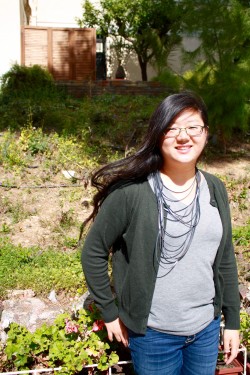Meet a Member: Carissa Nicholson

Carissa Nicholson is an Associate Member at the American School of Classical Studies at Athens. She is working on a dissertation in Art History at the University of Florida.
Q: What is your particular field of interest?
A: I am interested in the iconography of domestic scenes on classical pottery.
Q: How did you get interested in this topic?
A: I think the way a lot of people get interested in their topic-I took one seminar on classical pottery and then I took another seminar on archaeology of the Greek household. I asked the professor who taught both how I could combine the two and then I realized that I loved that body of images and I had barely scratched the surface.
Q: What kinds of domestic scenes are portrayed on the classical pottery you’re researching?
A: It’s a very limited range of domestic scenes actually, they’re not trying to show the full range of activities that would occur in the Greek household but rather specific idealized scenes of civic responsibilities of the household. There are many images of women weaving, images of preparations for important rites such as weddings or funerals, but there’s also scenes of play and children interacting with their parents and things like that. A lot of the depictions are female focused. If you count depictions of the symposium then that includes many more male dominated scenes too.
Q: What questions are you looking to answer in your research?
I’m looking at grouping all of those images together to see what conventions the painters are using to portray the household? What little pieces of imagery are they using to indicate you’re in a domestic context? And what kind of scenes are they not showing compared to the archaeology of the household?
Q: What resources are you using to do your research?
A: All of my degrees are in art history so I’m object and image focused. But I also have some training in archaeology-- I worked at Gournia for four seasons and I’ve done field school in the states—which helps when looking at the objects. There’s some studies that use this iconography to explain things found in the archaeology, but to study just the images is new.
Q: Are you using any of the classical contemporary literature in your study?
From the literature on the household we know women are supposed to produce weaving materials and production of the household and be the economic guardians. Showing women spinning and weaving on pottery often gives an idealized impression of what we get in the literature, from people such as Demosthenes. I think the depictions on the pottery is heavily idealized because a lot of it is painted by male painters who are fantasizing about what the ideal Greek household should look like, or at least playing into the idea. These images become important during 5th century, when Athens comes into being a democratic city and civic ideology comes more to the foreground.

Q: What brought you to the ASCSA?
A: I’ve never stayed in Athens before and the opportunity to see the monuments and images that I’ve been studying for years in books and lectures is essential.
Q: What is your favorite restaurant in Athens?
A: A friend recently introduced me into cozy modern taverna near the first cemetery called Loestra.
Q: Where else in Greece would you like to visit?
A: Since I started my work on Greek archaeology first in Crete it’s a very special place for me, but I’ve never really explored western Crete. If I go this spring places like Chania will definably be on my itinerary.
Q: If you were a Greek god or goddess which one would you be?
A: Gods and goddesses get a really bad deal in the Greek pantheon. I think I would have to pick a minor god like Iris because at least she can fly.
Q: What do you get from your experience at the ASCSA?
A: Again getting to see everything in person and getting to meet the scholarly community that comes to the school. Everyone works on such diverse topics, it inspires me to ask different questions and look at my work from a new perspective.